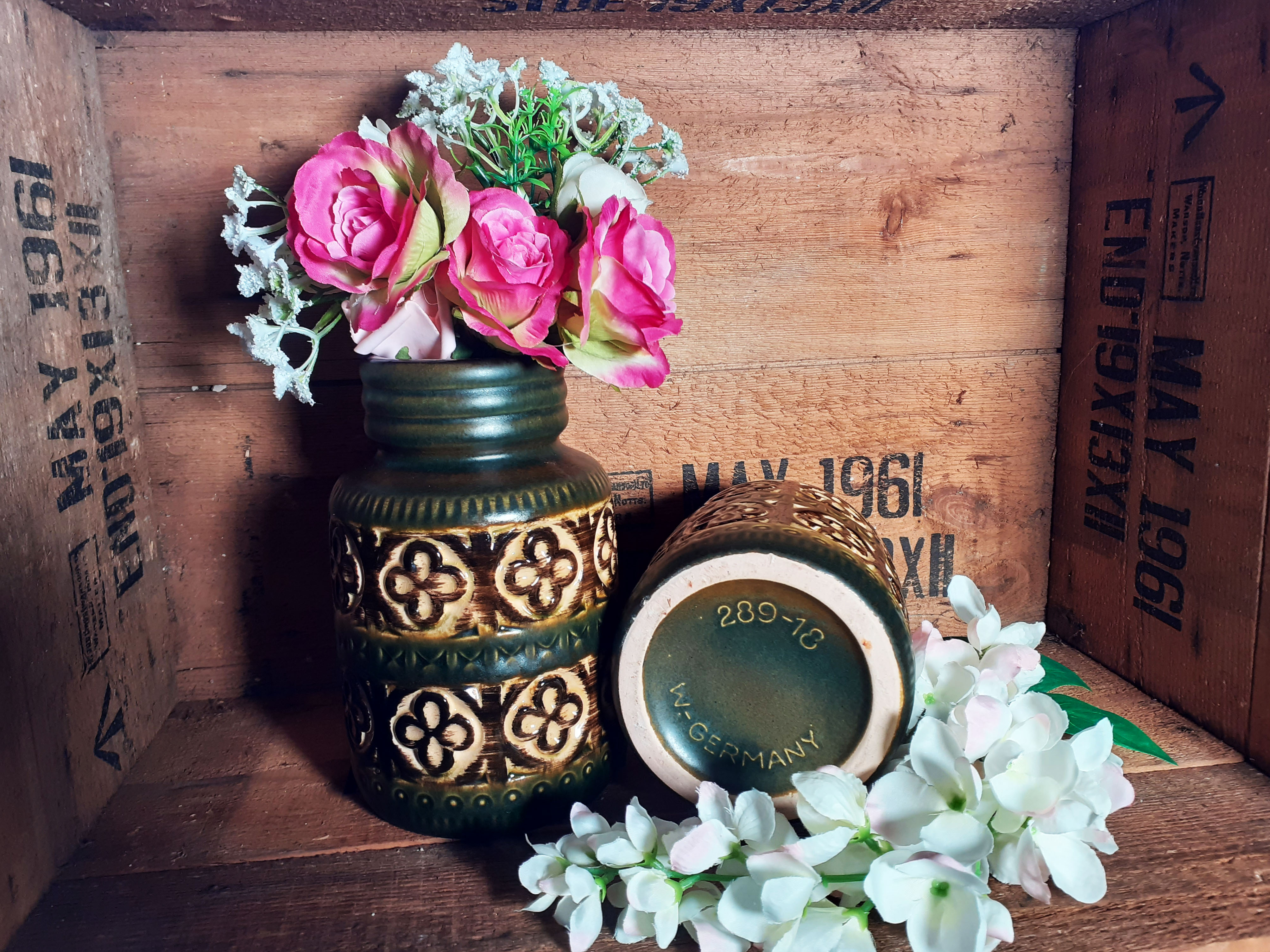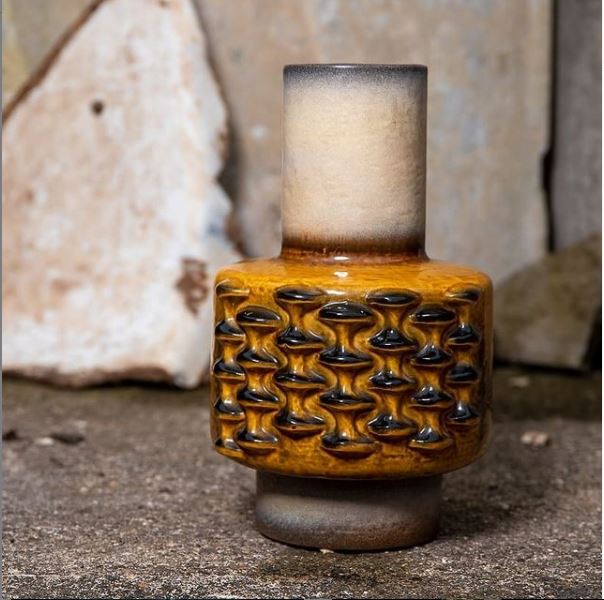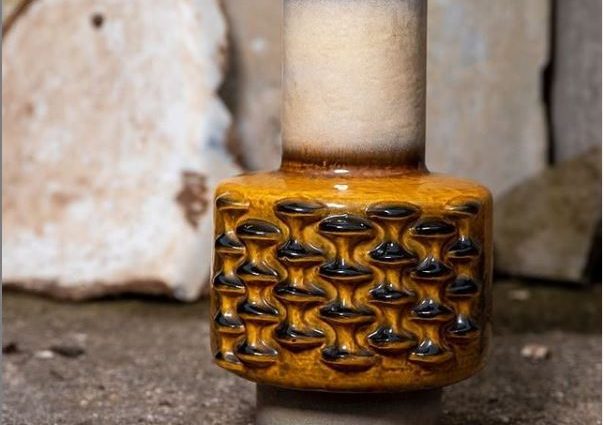West German Art Pottery is essentially a term describing the time period of 1949-1990 and became the early way to describe the pottery because the country of origin, with numbers denoting the shape and size, was often the only “mark” on the base.

Even though company names are now better known, and many items are attributed to specific makers, the more generic term “West German pottery” remains in common use.
“Fat Lava” is a popular term that strictly refers to a fairly small subcategory of glazes but is all too often improperly used as a synonym for West German pottery.
The work of the main producers in the style concentrated on single decorative items such as vases, jugs and bowls, rather than sets of tableware. There were a relatively large numbers of basic shapes in the plain clay body, and these were heavily decorated, typically with a great variety of glaze effects in more than one colour, many using thick contoured glazes.

The bodies sometimes carried moulded patterning or incised decoration (as in the ‘Vetter’ bowl) but glaze colours usually had the impression of being placed by flowing or brushing, rather than more precise painting. Figurative decoration is not very common, and typically plant-based when it occurs.
A common style of base mark was “W. Germany”, xxx shape number / or – xx height in cm. The name of the manufacturer was often carried on an adhesive sticker prominently attached to the body of the piece, which is now usually lost.
After the defeat of Nazi Germany, it took a few years to rebuild the German pottery industry.
During its heyday from the 1950s until the 1970s, over 100 pottery and porcelain companies and studio potters were actively producing art pottery in West Germany. Scheurich, Carstens, Bay, ES, and Dümler & Breiden were the most prolific producers, and while production began slowing in the early 1970s, a wide variety of art pottery was produced well in the 1980s.

West German Art Pottery is well known for its great variety of forms and expressive colors. The pottery began getting attention in the mid 1990s, and interest has been growing ever since.
I have a particular interest in these with the bold designs and colours. So there will probably be some in the shop most of the time.
Please visit the shop on this very website to check out our latest fantastic items for sale.
We love history and enjoy keeping the memories and nostalgia alive. We love anything curios or unusual, alongside more mainstream antiques, vintage and retro.
